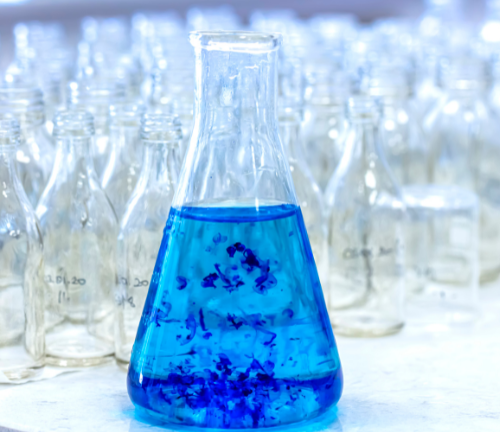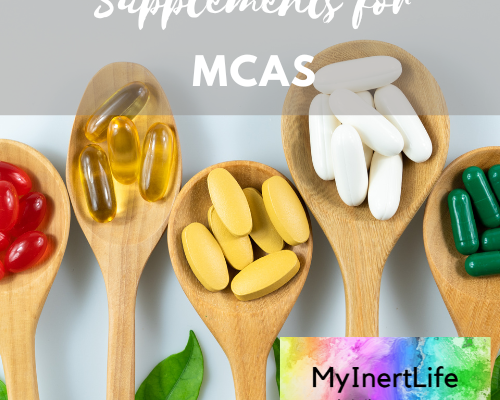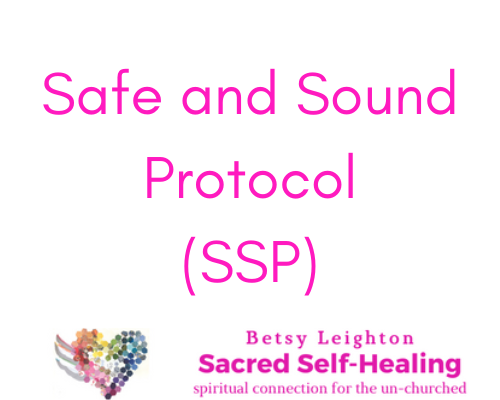This post covers using Methylene Blue for MCAS. Methylene Blue isn’t for everyone, so be sure to consult with your healthcare provider before trying it.
As an Amazon Associate, I earn from qualifying purchases.
Table of Contents
What is MCAS?
Mast Cell Activation Syndrome (MCAS) is a chronic condition that affects all organ systems. MCAS is serious and disabling and people with MCAS experience often significant and debilitating symptoms daily, including anaphylaxis, which can be fatal.
MCAS is often found in combination with other chronic conditions such as Ehlers-Danlos Syndrome (EDS) and Postural Orthostatic Tachycardia Syndrome (POTS).
Frequently healthcare providers do not know about MCAS, and the tests for MCAS are problematic because they are not uniformly reliable. MCAS can be difficult to manage. Treatments include blocking mast cell mediators with anti-histamines and mast cell stabilizers, as well as avoiding triggers.
Check out this post on how to manage MCAS.
What is Methylene Blue?
I saw a new functional provider to fine-tune my MCAS symptoms, and he suggested that I try Methylene Blue.
Methylene blue has a long and interesting history that spans different fields of study and applications. It was originally discovered and used as a dye in the textile industry and eventually became the first developed synthetic drug.
According to a PubMed article titled “Methylene Blue: The Long and Winding Road from Stain to Brain: Part 1,” methylene blue has been extensively used for biological staining in various disciplines such as histology, bacteriology, and hematology. It was first used as a medication over a century ago to treat malaria.
Interestingly, methylene blue was also one of the first drugs to be used in the treatment of patients with psychosis at the end of the 19th century. This eventually led to the development of phenothiazine antipsychotic drugs in the mid-20th century.
In the 1980s, methylene blue was studied in relation to bipolar disorder, and in recent years, its potential therapeutic applications in neurodegenerative disorders have been investigated. The drug’s use over time, driven by careful observation, clinical needs, serendipity, and the integration of concepts from different disciplines, has led to the discovery of many uses for Methylene Blue in healthcare.
Why Methylene Blue for MCAS
I was initially skeptical about trying Methylene Blue. I’m extremely sensitive to everything, especially food dyes, and it seemed crazy to take Methylene Blue therapeutically.
But after doing a quick search I saw that Methylene Blue popped up fairly frequently in the MCAS Facebook groups I’m in. Some people claimed it cured their MCAS. Others didn’t see any benefit.
I did more research and found that Methylene Blue is a mast cell stabilizer:
“As a competitive inhibitor of guanylate cyclase, methylene blue blocks the smooth muscle relaxation and vasodilatation, along with other downstream effects of nitric oxide, including blockage of other mediators of mast cell degranulation (such as histamine and platelet-activating factor)” – source
I also learned that Methylene Blue (MB) is helpful in treating anaphylaxis – source, source.
It has also been found to inhibit the formation of kidney stones – source.
Because I have issues with oxalates and sulfur, this intrigued me.
The bucket theory
The bucket theory offers a helpful analogy for understanding symptom reactions with MCAS.
Think of your body as an empty bucket that you want to keep from overflowing. Different foods and activities fill your histamine bucket at different speeds but they combine to form the total level of histamine in your body (how full your bucket is). A fuller bucket means you have more histamine symptoms. When you manage triggers, reduce exposure to known triggers, and take medications and supplements to reduce histamine, you can manage the level of your bucket.
Know your typical symptom progression
Knowing your symptom progression in a symptom flare is the key to developing your own rescue plan. In this post, I discuss how to determine your own symptom progression. Once you know what typically happens in your symptom progression you can design a rescue plan to address those symptoms.
Get my free ebook, symptom log, and meal plan!
Want a tool to easily keep track of your symptoms? Sign up for my newsletter and you will receive my free 50-page ebook of lower-histamine, grain-free, sugar-free recipes, my free symptom log, and a free two-week meal plan!
Using Methylene Blue safely
The key to the safe use of MB, I discovered, is that some people carry a genetic mutation that makes Methylene Blue toxic to their bodies. If you are one of those people, you don’t want to use MB because it will do more harm than good. Since I didn’t know whether I carried that mutation I decided to try a very small dose for a week and see what happened.
My functional provider prescribed a compounded form of MB, 10 mg twice daily.
But in talking with my compounding pharmacist he recommended that sensitive people start with 2.5 mg twice a day.
My functional provider is a naturopath in Oregon, and it turned out that he couldn’t prescribe in my state of Minnesota. He suggested that I try the USP-grade drops available on Amazon. I didn’t want to pay for a higher dose than I could tolerate, so I gave the drops a try.
I started with one drop (0.5 mg) twice daily with food. Word to the wise — I tried it once without food and did not feel good. Take it with food.
Over ten days I gradually increased by one drop every few days, until I was taking four drops (2 mg) twice daily with food.
My experience with MB
The very first day I took MB, at a very low dose, my hot flashes and neuropathy decreased ten-fold. Over the next ten days, I noticed I still had hot flashes and neuropathy, but they were occurring with much less frequency, duration, and intensity.
Before starting MB I was waking up feeling like I was being electrocuted by a jolt of electricity 3-10 times per night (depending on how full my bucket was). Each bout of neuropathy caused a huge hot flash, and the only way I have found to stop the cycle is to get out of bed and walk around for a few minutes.
The first night on MB I had one bout of neuropathy/hot flashes. Wow! This was significant!!!
And now that I’ve been taking 2.0 mg of MG twice daily with food for a few weeks I’m still only averaging one bout per night. My sleep is so much better!!!! The neuropathy/hot flashes I am experiencing are “baby size.” Meaning, that I no longer have to get out of bed to stop the cycle. I’d say they are a 2 on a scale of 1-10. Previously they averaged 7-10.
I’ve read that MB can be helpful for skin conditions, and a few drops can be added to lotion and applied to the skin. In the wintertime, I get very chapped, dry, and cracked hands. I’m experimenting with this and I’ll report back on what I find.
Cautions about MB
I am going to spell this out again:
I am not a medical provider. I do not have medical training. I am not qualified to make healthcare recommendations. And certain people should definitely not take MB.
This exhaustive video by doctor of nutrition Chris Masterjohn covers the history, uses, and contraindications of MB. MB is a complicated medicine that has been used for many ailments for over 120 years. However, people with a certain gene mutation should not take MB. Talk to your healthcare provider before trying MB.
Another consideration is that MB is a very strong blue dye. I heard that compounding pharmacies don’t want to compound it because it turns their labs blue. You want to be very careful that you don’t spill MB on anything precious.
At higher doses, it apparently turns your urine and feces blue, and can also stain your teeth.
Sign up for the SSP!
The SSP is a listening therapy based on Polyvagal Theory created by Stephen Porges to unlock your ability to think, feel, and connect better through nervous system regulation. You use the SSP via an app on your phone and listen with over-the-ear headphones to specially filtered music that heals the nervous system, specifically the vagus nerve. You subscribe to the app with a provider like me and listen to the specially curated music for 30 minutes each day for a 5-hour cycle. Studies show the SSP has a profound effect on mental health and chronic conditions
You can sign up for the SSP here!
Order my book!
Rocks and Roots chronicles my journey solo backpacking the Superior Hiking Trail and overcoming nervous system dysregulation, gut dysbiosis, and Mast Cell Activation Syndrome symptoms to hike 328 miles successfully.
Check out this powerful frequency device
Healy is an individualized microcurrent device I use to reduce inflammation. Check out this post for more about Healy.
Sign up for a session!
I provide one-on-one in-person and remote chronic illness and caregiver coaching and Sacred Self-Healing Sessions based on the Sacred Self-Healing Method, a proven novel co-creative healing modality detailed in my Books.
Click here for more information.
What do you think?
I’d love to have your reply below!
Disclaimer
The preceding material does not constitute medical advice. This information is for information purposes only and is not intended to be a substitute for professional medical advice, diagnosis, cure or treatment. Always seek advice from your medical doctor.




